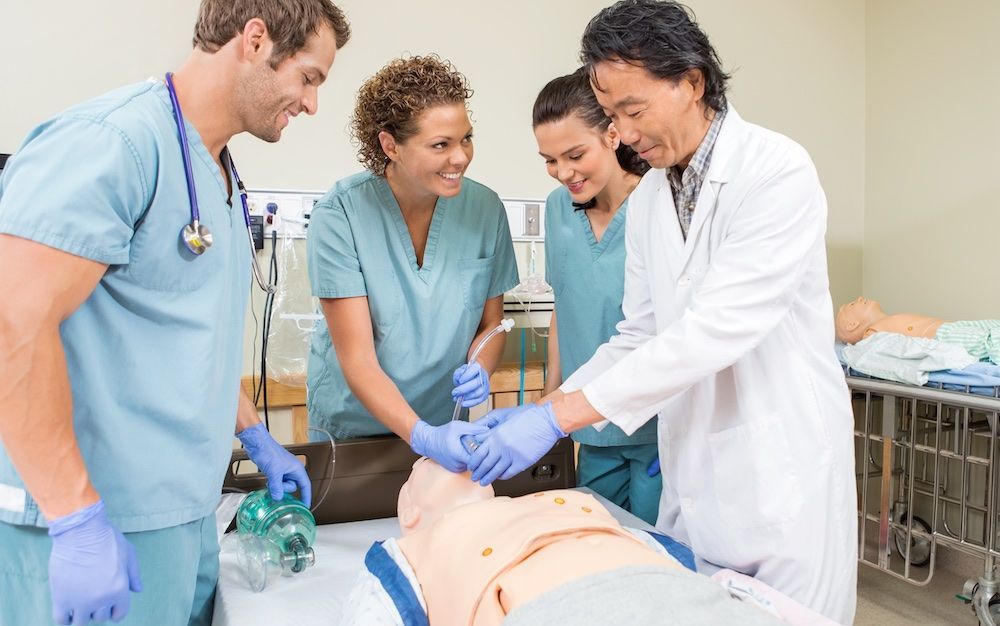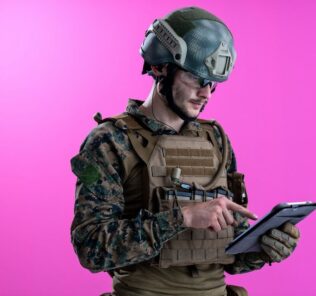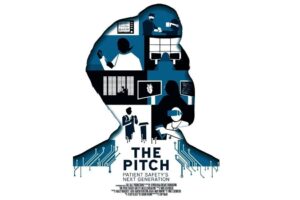Clinical Simulation Research Focus: Debriefing Specific Learner Groups
Debriefing in healthcare simulation is considered essential for all simulation experiences to assist the learners to translate knowledge gained in the simulation into clinical practice. The Healthcare Simulation Dictionary defines debriefing as “an activity that follows a simulation experience and led by a facilitator to encourage participants’ reflective thinking and provide feedback about their performance, while various aspects of the completed simulation are discussed.” As a verb, debriefing is to “conduct a session after a simulation event shere educators/instructors/facilitators and learners re-examine the simulation experience for the purpose of moving towards assimilation and accommodation of learning to future situations.” This HealthySimulation.com series by will explore the published research in simulation literature in 2023 on simulation within specific learner group. The groups of learners included pediatric nursing, interprofessional simulation, NICU, critical care, patient perspective, speech and language pathology, critical care, cultural differences, and mental health simulations
Chipman et al. (2023). Engagement Across Professions: A Mixed Methods Study of Debriefing After Interprofessional Team Training. Simulation in Healthcare, 10-1097 : Simulation is an ideal tool for interprofessional (IP) team training. Debriefing after simulation is key to IP learning, although engagement and participation may be adversely influenced by cultural and hierarchical barriers. This mixed-methods study explored factors influencing learner engagement and participation in IP debriefing and the experience of “silent but apparently engaged” participants. Semi-structured profession-specific focus groups were conducted with participants from a weekly IP pediatric simulation program. Focus groups were recorded, transcribed, and thematically analyzed. Eligible participants were assigned to “silent” or “verbal” groups according to observed behavior and received a questionnaire. Participants’ self-rated engagement scores were compared using a t-test. Thirty-six of 81 eligible participants were included, 13 completed a questionnaire, and 23 (8 physicians, 10 nursing staff, 4 pharmacists, 1 respiratory therapist) participated in 13 focus groups.
Twenty-two subthemes were grouped into 6 themes: psychological safety, realism, distractors, stress, group characteristics, and facilitator behavior, with differences in perspective according to profession. Of the 36 respondents, 18 were “silent” and 18 “verbal.” Self-rated engagement scores differed between groups (3.65 vs. 4.17, P = 0.06); however, “silent” participants described themselves as engaged. Themes identified that influenced learner engagement in debriefing included aspects of prebriefing and the simulation. Some aligned with general simulation best practices, such as psychological safety, prebriefing, and facilitator behavior. Findings unique to IP simulation included importance of realism to nonphysician professions, protecting time for training, group composition, and direct probing by cofacilitators to decrease physician bias and emphasize IP contributions. Silent participants reported engagement.
Sponsored Content:
Clephane et al. (2023). Assessing a Pediatric Nursing Simulation with an Electronic Health Record, Video-Assisted Debrief, and Minimized Group Sizes. Clinical Simulation in Nursing, 76, 17-25 : Simulated patient experiences are accepted as an effective teaching strategy in nursing education; however, variability remains in the literature surrounding simulation delivery best practices. This quasi-experimental study investigated the effect of simulation delivery variables such as video-assisted debriefing, simulated electronic health records (EHR), and smaller simulation groups on students’ perception of learning in a pediatric simulation. No differences were found among variables related to students’ perceptions of meeting the simulation learning objectives; however, students rated elements of debriefing effectiveness higher in groups utilizing a simulated EHR. Simulated EHRs may enhance students’ perception of simulation effectiveness and should be incorporated into nursing simulation as able.
Dahan et al. (2023). Have you ACED it? How to successfully implement performance-oriented, Acute Critical Event Debriefing. Paediatrics & Child Health, 28(2), 78-83 : Acute Critical Event Debriefing (ACED) after cardiopulmonary arrests should be the standard of care. However, little literature exists on how to implement performance-focused ACED in healthcare. Based on a series of successful ACED implementations in a variety of our settings, we describe key learnings and propose best practices to aid clinicians and organizations in establishing a successful ACED program. Within this practical guide, we also present a novel, standardized debriefing tool (Hotwash) that has been adapted for a variety of clinical settings.
Hendry et al. (2023). See it my way: Patient-perspective video capture debriefing in simulation. The Journal for Nurse Practitioners, 19(6), 104643 : This study used “patient-perspective” video capture to record students’ verbal and nonverbal communication from the patient’s perspective. Nurse practitioner students (N = 50) participated in a simulation with a standardized patient who wore a camera mounted in regular eyeglasses. Students and the standardized patient rated the encounter using the Patient Provider Relationship Questionnaire and open-ended questions. Students rated most communication domains significantly lower after viewing the patient-perspective and wide-angle videos. Students found the unobtrusive patient-perspective video helpful for reflecting and debriefing about their communication.
Joseph et al. (2023). Use of the Debriefing Assessment in Healthcare Simulation (DASH) in Speech-Language Pathology Clinical Simulation Learning Experiences. Journal of Research on Christian Education, 1-19 : Research indicates facilitated debriefing is more effective than non-facilitated debriefing. However, limited published work on this topic exists within communication sciences and disorders. This study investigates speech-language pathology clinical simulation experiences examining formative assessment of debriefing sessions. Two groups of graduate students were compared to assess students’ perceptions of simulated learning experiences over 6 consecutive weeks. Although no significant changes were noted, stability between-group ratings indicate students entered this experience with practical clinical skills. Future studies may consider students’ ability to apply previous knowledge compared to those with no previous clinical experience.
Sponsored Content:
Nerovich et al. (2023). Debriefing After Critical Events Is Feasible and Associated With Increased Compassion Satisfaction in the Pediatric Intensive Care Unit. Critical Care Nurse, 43(3), 19-27 : Repeated exposure to death and dying increases health care professionals’ risk for burnout and secondary traumatic stress. Pediatric critical care providers are at particularly high risk because the death and dying of children are associated with even greater psychological impact. A charge nurse in the pediatric intensive care unit identified a need for additional staff support after critical patient events. The aim of this quality improvement project was to design and implement a debriefing process, the Rapid Review of Resuscitation, in a 40-bed, high-acuity pediatric intensive care unit at an urban children’s hospital in the midwestern United States. A preintervention-postintervention survey used the Professional Quality of Life Scale, version 5, to evaluate staff members’ compassion satisfaction, burnout, and secondary traumatic stress before and 1 year after implementation. The debriefing process was designed and implemented on the basis of interview data and literature review. Pre-implementation (104 of 222 staff members [47%]) and postimplementation (72 of 184 staff members [39%]) survey responses were compared. Compassion satisfaction scores (mean [SD] T scores: pre-implementation, 54.10 [7.52]; postimplementation, 56.71 [6.62]) were significantly higher (P = .02) 1 year after implementation. Burnout (P = .69) and secondary traumatic stress (P = .06) scores were not significantly different. After implementation, 74% of respondents reported that the debriefing process was “very helpful” or “somewhat helpful” after critical patient events. Compassion satisfaction improved and burnout and secondary traumatic stress did not change with implementation of the debriefing process after critical patient events.
Quinn et al. (2023). Neonatal Healthcare Professionals’ Experiences When Implementing a Simulation and Debriefing Program in Neonatal Intensive Care Settings: A Qualitative Analysis. Advances in Neonatal Care, 10-1097 : Simulation-based training (SBT) and debriefing have increased in healthcare as a method to conduct interprofessional team training in a realistic environment. This qualitative study aimed to describe the experiences of neonatal healthcare professionals when implementing a patient safety simulation and debriefing program in a neonatal intensive care unit (NICU). Fourteen NICUs in California and Oregon participated in a 15-month quality improvement collaborative with the California Perinatal Quality Care Collaborative. Participating sites completed 3 months of pre-implementation work, followed by 12 months of active implementation of the simulation and debriefing program. Focus group interviews were conducted with each site 2 times during the collaborative. Content analysis found emerging implementation themes.
There were 234 participants in the 2 focus group interviews. Six implementation themes emerged: (1) receptive context; (2) leadership support; (3) culture change; (4) simulation scenarios; (5) debriefing methodology; and (6) sustainability. Primary barriers and facilitators with implementation of SBT centered around having a receptive context at the unit level (eg, availability of resources and time) and multidisciplinary leadership support. NICUs have varying environmental (context) factors and consideration of unit-level context factors and support from leadership are integral aspects of enhancing the successful implementation of a simulation and debriefing program for neonatal resuscitation. Additional research regarding implementation methods for overcoming barriers for both leaders and participants, as well as determining the optimal frequency of SBT for clinicians, is needed. A knowledge gap remains regarding improvements in patient outcomes with SBT.
Rana et al. (2023). Cultural differences in simulation debriefing: A qualitative analysis. Heliyon, 9(4) : Simulation is a social practice impacted by norms, values, and beliefs. We seek to explore the relationship between cultural factors and participant behaviour patterns as perceived by debriefers during healthcare simulation debriefings. Our research question focuses on elucidating factors that influence debriefing dynamics between and among debriefers and learners according to Hofstede’s cultural dimension: the Power Distance Index. The study employed inductive qualitative analysis following Braun and Clark’s 6-step approach to explore debriefers’ perceived barriers to discussing non-technical skills including closed-loop communication, situational awareness, and cultural aspects of healthcare simulation debriefing. This study is a complementation to previously published quantitative paper, the qualitative findings are derived from the third section of the interview guide developed by the authors which focused on aspects of the debriefing such as debriefers’ perceptions of participant familiarity with non-technical skills and cultural sensitivity.
The responses of 57 debriefers from 26 countries were analysed; 36 (64%) of whom practiced simulation in low power distance index (PDI) countries and 31 (36%) practiced in high PDI countries. We identified three major themes: I. Group dynamics, encompassing challenges of hierarchy, ‘speaking up’, fear of ‘losing face’ and ‘judgement’. II. Conceptual clarity about debriefing medical/technical content and the challenges of ‘language’ and III. Institutional ‘skepticism’ toward simulation as a relatively new method of teaching in many parts of the world. The findings confirm the social nature of simulation debriefings, where the interactions are guided by motivations and rules, and where more variability can be found within a culture than between cultures. Acknowledging these differences could lead to cultivating new integrative perspectives for all levels of the healthcare system.
Scott et al. (2023). The impact of debrief models on self-efficacy within mental health simulation training: a quantitative analysis. International Journal of Healthcare Simulation, (null), 1-9 : Recently, simulation-based education (SBE) has been evidenced as an effective form of pedagogy in mental health and care settings, through consistent improvements in self-efficacy and technical and non-technical skills. A key component of SBE is post-simulation debriefing. Debriefing involves educators turning into facilitators and guiding participants through reflective discussions; however, there is no single debrief model used across simulation training. Debrief models have been previously evaluated, but not directly compared. This paper investigated whether there is a significant difference between self-efficacy scores of participants debriefed using the Diamond model and a modified Pendleton’s during SBE. Participants included 751 healthcare professionals who attended various simulation training courses between September 2017 and August 2019.
Participants completed pre- and post-course questionnaires using the Human Factors Skills for Healthcare Instrument. Pre- and post-data were screened using Mahalanobis distance and Levene’s test and data were analyzed using paired-samples t-tests. Significant differences in human factors scores were found for the Diamond debrief model only. No significant improvements were found for the Pendleton’s model. Results suggested a benefit to using the Diamond model over the Pendleton’s model during simulation debriefs, due to a significant improvement in self-efficacy scores. These findings contribute to the gap in literature around direct comparison of debrief models and support studies where the Diamond model has yielded significant improvements in human factors skills previously.
To remain current in best healthcare simulation practices, simulationists must read and evaluate the literature and research published. This clinical simulation review on debriefing for specific groups of learners is part of a series to focus on published research in healthcare simulation for 2023.
Learn More About Simulation Debriefing!
Teresa Gore, PhD, DNP, APRN, FNP-BC, CHSE-A, FSSH, FAAN – Dr. Gore has experience in educating future nurses in the undergraduate and graduate nursing programs. Dr. Gore has a PhD in Adult Education, a DNP as a family nurse practitioner, and a certificate in Simulation Education. Dr. Gore is an innovative, compassionate educator and an expert in the field of healthcare simulation. In 2007l Teresa started her journey in healthcare simulation. She is involved in INACSL and SSH. She is a Past-President of INACSL and is a Certified Healthcare Simulation Educator Advanced (CHSE-A). In 2018, she was inducted as a Fellow in the American Academy of Nursing (FAAN). In 2021, she was inducted as a Fellow in the Society of Simulation in Healthcare Academy (FSSH) and selected as a Visionary Leader University of Alabama at Birmingham School of Nursing Alumni. During her career, Dr. Gore has led in the development and integration of simulation into all undergraduate clinical courses and started an OSCE program for APRN students. Her research interests and scholarly work focus on simulation, online course development and faculty development. She has numerous invited presentations nationally and internationally on simulation topics.
Sponsored Content:


















